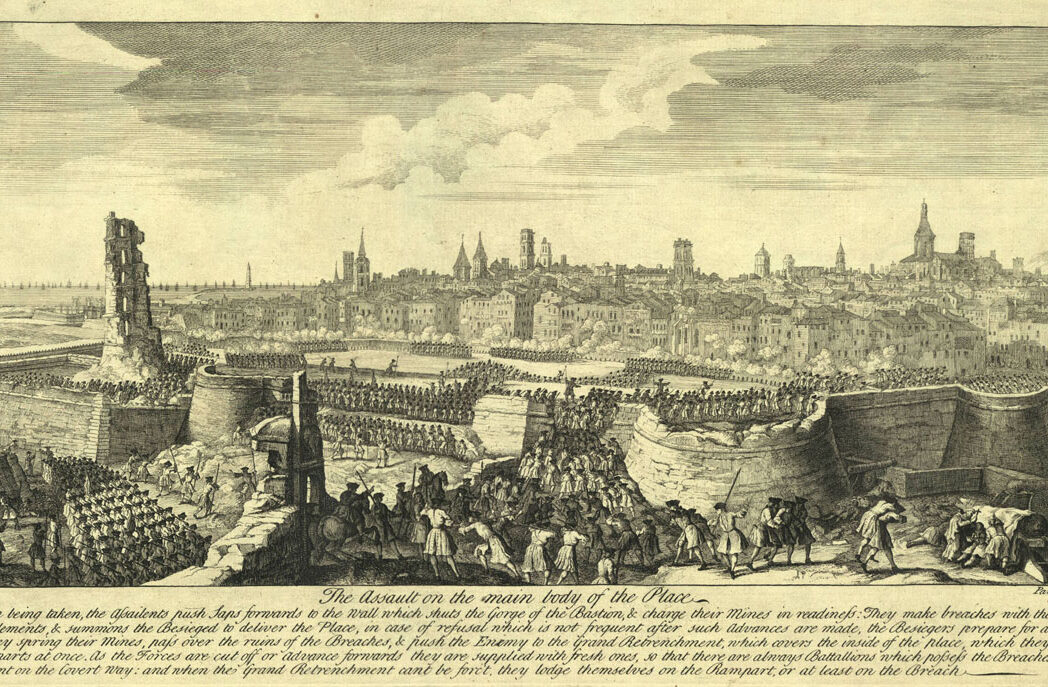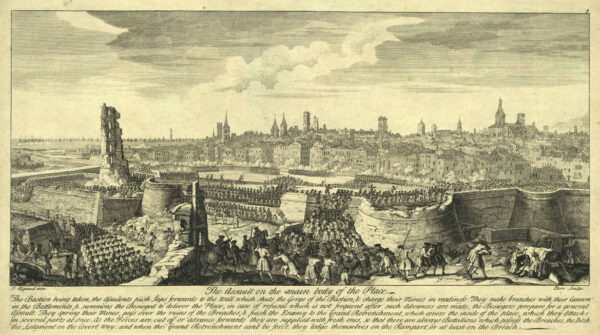Source:El Debate
Historians of Catalonia offers in a video a different image “of the conflict that marked the destiny of the Catalonia we know today”
A historical commitment. A commitment that no Spanish regime or government has been able to make a reality, despite some attempts, since the fall of Barcelona on September 11, 1714 and the Nueva Planta Decree that abolished the Catalan institutions and constitutions and began the persecution of the Catalan language”. This phrase was pronounced by the former president of the Generalitat (and escaped criminal), Carles Puigdemont, in the conference he gave last September 5 from Brussels, to explain the conditions he was going to claim to support the investiture of the president of the Government.
Puigdemont said that the objective was to achieve that “historic compromise”, and referred to that date, known as the Diada and celebrated in Catalonia as its “national holiday”. Date to which the separatists go back because from there, they claim, the repression of Spain towards Catalonia became more evident. But what happened then? The organization Historians of Catalonia dismantles some of the myths of the pro-independence supporters in relation to September 11 and these historical events. And it does so in a 30-minute video in which they unravel some questions.
Puigdemont habla de historia, pero la historia fue muy diferente. Si quieres saber más, mira este documental de Historiadors.
La Diada. Una historia crítica https://t.co/taX3rB8Rm9 pic.twitter.com/V24OGOu1ZK— Historiadors de Catalunya (@historiadorsorg) September 6, 2023
The Senyera
The defenders of Barcelona did not wave the Senyera, the flag of the four stripes. The Catalan troops never used this flag, but images of patron saints with different colored backgrounds. And even the Regiment of Royal Catalan Guards had as flag the Cross of St. George, says the vexillologist Luis Sorando.
Has September 11, 1714 always been commemorated? For Ricardo Garcia, professor emeritus of history at the UAB (Universidad Autónoma de Barcelona), it is at the end of the nineteenth century “when the memory of the dramatic events of 1713-14 is evoked”. Jordi Canal agrees, who considers it “logical”, taking into account that it was at the end of the 19th century “when Catalan nationalism was born“.
Felipe V, “acclaimed in Catalonia”.
The death of Carlos II brought about the end of the Habsburg dynasty and Felipe V was appointed as successor to the Spanish Crown. A succession “perfectly adjusted to the laws of succession existing in the Spanish monarchy”, say Historians of Catalonia, because in the will it was designated “the only successor the candidate of the house of Bourbon, Philip d’Anjou”. Among other things, because the kinship was “closer”. And fearful of the power of the Bourbons, who reigned in Spain and France, other territories, such as England, Holland, Prussia and Austria formed the Grand Alliance in The Hague in 1701. And a year later, this alliance declared war on the Bourbons.
And what happened in Catalonia? To begin with, the new King, Felipe V, entered Catalonia “acclaimed by the people”. These historians also emphasize that the monarch had “much interest in that it was immediate, that the representatives of the Cortes of the Principality met in the hall of the Tinell. Felipe V swore the Constitutions of Catalonia, and, at the same time, in correspondence, he was sworn in as Count of Barcelona“. Moreover, some “Austracists” (Habsburg supporters) emphasized this positive attitude of the King.
The role of a game of pelota
And how did the change in Catalan society come about? The truth is that some important families had enriched themselves by giving goods to the army. But when the peace with France arrived, when Felipe V was proclaimed King, this “business” ended. And it would be these families who would organize an Austracist party. “Instead of explaining that it was a mistake of these elites who had nothing to gain and much to lose, the persistence of victimhood is maintained. This is the attitude that has predominated subsequently” , says historian Joaquim Coll. And the Austracists had Archduke Carlos of Austria as their candidate.
And the most curious of all is that “the trigger for the War of Spanish Succession in Catalonia was a ball” , says the president of Historians of Catalonia, Oscar Uceda. Specifically, as a result of a fight that originated over a ball game between members of several families living in Central Catalonia. They were families from Vic and Manlleu. All this ended in a major conflict that caused dozens of deaths. And those responsible for these clashes, to avoid arrest, declared themselves in rebellion and supporters of the Archduke. Representatives of these families were also those who met in Genoa with envoys from England, behind the back of the Generalitat and the Consell de Cent. But even so, they agreed to the participation in the war of the Principality of Catalonia, which would provide volunteers and land on which to fight. In exchange, England provided money and troops.
And so it happened. English and Dutch landed in Spain in August 1705 with the archduke at their head. But the volunteers promised by the Catalan side did not show up. The pretender to the throne sent a letter to all the mayors urging them to rebel and take his side, but “nobody answered”. At first, the uprising was only successful in Central Catalonia, but under coercion and threats, other mayors swore allegiance to Archduke Caralos. In short, the rebellion was “forced”. Only a few cities tried to resist, such as Lérida or Cervera.
However, the city council of Cervera, according to Historians of Catalonia, has currently tried to “whitewash the bad image of the city among the independence movement by claiming that they had never been Bourbon, but Austracists”. But, in fact, Felipe V “rewarded” the city, for its loyalty, with the construction of a new university.
The 1705 siege of Barcelona
In this case, the besiegers were the Austracists and managed to take the city. A year later the situation was reversed, although the Bourbons did not manage to recover it. And once Barcelona was in their hands, the Archduke raised new courts with representatives “related to his cause” and excluded the House of Bourbon from the throne of Spain and declared null and void the Constitutions of 1702 signed with King Felipe. Therefore, according to the organization, if they lost the war, legally “Felipe no longer had to respect his part of the 1702 agreement and would be free to abolish the privileges and laws of the Principality as he wished”.
To this must be added the assassination of the Conseller en Cap Nicolau de San Juan, accused of being a Bourbon supporter. At that time, Carlos of Austria already controlled the two main institutions: the Generalitat and the Consell de Cent. The truth is that this war situation in Catalonia brought back money for the military contractors and “with the war their business prospered”.
Carlos leaves the Catalans “stranded”
But little by little the troops of the Archduke Carlos were falling, who first lost the battle of Almansa. Later Lérida fell in 1707. And the situation takes an absolute turn, when the Emperor Joseph of Austria dies. carlos preferred to crown himself Emperor and renounce the Spanish throne, moving to Vienna. In short, he left the Austracists “hanging”.
In April 1713 the Treaty of Utrecht was signed, putting an end to the war in Europe. But in Catalonia it was decided to continue with the conflict to “force Felipe to maintain the privileges as if nothing had happened”. A black flag was raised on Montjuïc with the slogan “dead or our privileges preserved”. In short, and unlike what current nationalism defends, it was not about defending democratic freedoms, but privileges. Even, more, in the Treaty of Utrecht, in its article 13, the amnesty of the Catalans who participated in the war is supported. This was rejected and “the insurgent way” was chosen.
The Virgin of La Mercè as general
It was then that an army “financed by the Catalan elites” was raised. And in 1713 the siege of Barcelona began. Its defense corresponded to General Villarroel. And when he informed the Catalan institutions that it was impossible to continue this way much longer, he was dismissed and replaced by a statue of the Virgin of La Mercè, who was dressed as a general and paraded through Barcelona. On September 11, 1714 the city agreed to negotiate, and on the 12th Barcelona surrendered. Rafael Casanova, then Conseller en Cap, in his final harangue, does not mention the separation of the Principality from the Spanish crown, but cries for the freedom of all Spain.
The Fossar de les Moreres
According to tradition and the current official account, the defenders of the siege of Barcelona are buried there. And it is in this place where the acts of commemoration of the Diada start. “Al fossar de les Moreres / no s’hi enterra cap traïdor; / fins perdent nostres banderes / serà l’urn de l’honor” (in the pit of the Moreres no traitor is buried; even losing our flags it will be the urn of honor”. This is a verse of the poet Serafí Pitarra that is inscribed at the base of the monument of the Fossar.
The problem is that it is not a mass grave itself, according to archaeologists. But this idea is taken precisely from the poetry of Pitarra, who wrote 160 years after the events. Roger Molinas Amorós, assures that there are successive individual burials there, from the High Middle Ages to the 19th century, but “not a collective grave of a single moment”. And it was also at the end of the 19th century that the myth surrounding this place began to be built.
Why is the Diada celebrated?
Historians of Catalonia have wanted to give it a great political charge, they say, and “to make a historical continuum of mistreatment and repression in which the history of Catalonia with Spain, with the central power, with the monarchies, has always been a problematic history of repression”. For this reason, they add, they have had to “reinterpret” the history around 1714 “hiding the official sources” and fabricating “a false story of a war of Catalonia against Spain, of occupation, of repression”, in the words of the historian Joaquim Coll. And 1714, was, in this sense “the starting point that would justify the separatist bet that we have lived these last years”.
Share this article
On This Day
- 1503 Battle of Cerignola (Italy).
- 1522 Santiago de Cuba is granted the city status by Carlos I.
- 1589 Margarita de Saboya is born.
- 1611 Archbishop Miguel de Benavides founded the University of St Thomas in Manila.
- 1777 José Primo de Rivera, Hero of the Sieges, was born in Algeciras.
History of Spain
26 August 2020
27 January 2021
Communism: Now and Then
23 December 2022
28 July 2021







